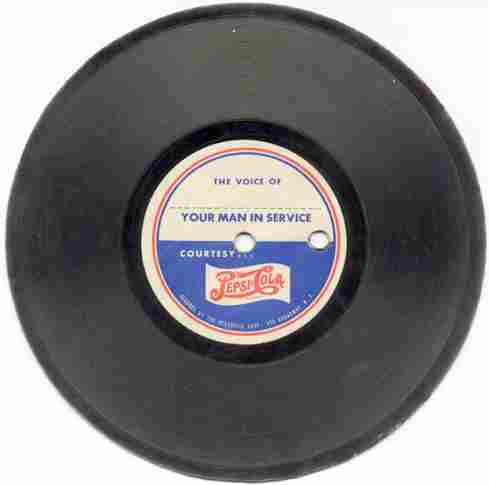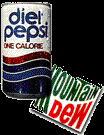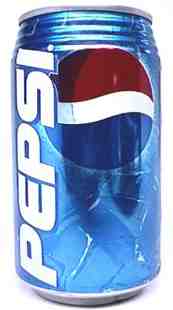Question:
Research one multinational corporation like Procter and Gamble, Unilever, IBM, Microsoft, Honda and etc. Identify and describe how their subsidiaries are managed and how technology has assisted them in their corporate and/or local operations. Further, identify one Philippine company that has gone worldwide (eg. Jollibee and BENCH) and describe their strategies. Evaluate the strategies of foreign companies with that of Philippine corporations.
Answer:
In 1893, Caleb Bradham, a young pharmacist from New Bern, North Carolina, begins experimenting with many different soft drink concoctions. Like many pharmacists at the turn of the century he had a soda fountain in his drugstore, where he served his customers refreshing drinks, that he created himself. His most popular beverage was something he called "Brad's drink" made of carbonated water, sugar, vanilla, rare oils, pepsin and cola nuts.
One of Caleb's formulations, known as "Brad's drink", created in the summer of 1893, was later renamed Pepsi Cola after the pepsin and cola nuts used in the recipe. In 1898, Caleb Bradham wisely bought the trade name "Pep Cola" for $100 from a competitor from Newark, New Jersey that had gone broke. The new name was trademarked on June 16th, 1903. Bradham's neighbor, an artist designed the first Pepsi logo and ninety-seven shares of stock for Bradham's new company were issued.

1898 - One of Caleb's formulations, known as "Brad's Drink," a combination of carbonated water, sugar, vanilla, rare oils and cola nuts, is renamed "Pepsi-Cola" on August 28, 1898. Pepsi-Cola receives its first logo.
1902 - The instant popularity of this new drink leads Bradham to devote all of his energy to developing Pepsi-Cola into a full-fledged business. He applies for a trademark with the U.S. Patent Office, Washington D.C., and forms the first Pepsi-Cola Company.
The first Pepsi-Cola newspaper advertisements appeared in the New Bern Weekly Journal.
1903 - "Doc" Bradham moves the bottling of Pepsi-Cola from his drugstore into a rented warehouse; he sells 7,968 gallons of syrup in the first year of operation.
Pepsi's theme line is "Exhilarating, Invigorating, Aids Digestion."
1904 - Bradham purchases a building in New Bern known as the "Bishop Factory" for $5,000 and moves all bottling and syrup operations to this location. Pepsi is sold in six-ounce bottles. Sales increase to 19,848 gallons.
1905 - Pepsi-Cola's first bottling franchises are established in Charlotte and Durham, North Carolina.
Pepsi receives its new logo, its first change since 1898.
1906 - Pepsi gets another logo change, the third in eight years. The modified script logo is created with the slogan, "The Original Pure Food Drink."

There are 15 U.S. Pepsi bottling plants. The Pepsi trademark is registered in Canada. Syrup sales rise to 38,605 gallons.
The federal government passes the Pure Food and Drug Act, banning substances such as arsenic, lead, barium, and uranium, from food and beverages. This forced many soft drink manufacturers, including Coca-Cola, to change their formulas. Pepsi-Cola, being free of any such impurities, claimed they already met federal requirements.
1907 - Pepsi-Cola Company continues to expand; the company's bottling network grows to 40 franchises. Pepsi-Cola sells more than 100,000 gallons of syrup.
Pepsi trademark is registered in Mexico. Syrup sales rise to 104,026 gallons.
1908 - Pepsi-Cola becomes one of the first companies to modernize delivery from horse drawn carts to motor vehicles. Two hundred fifty bottlers in 24 states are under contract to make and sell Pepsi-Cola.
1909 - Automobile race pioneer Barney Oldfield endorses Pepsi-Cola in newspaper ads as "A bully drink...refreshing, invigorating, a fine bracer before a race."
1910 - The first Pepsi-Cola bottlers' convention is held in New Bern, North Carolina.

1920 - Pepsi theme line speaks to the consumer with "Drink Pepsi-Cola, it will satisfy you."
After seventeen years of success, Caleb Bradham lost Pepsi Cola. He had gambled on the fluctuations of sugar prices during W.W.I, believing that sugar prices would continue to rise but they fell instead leaving Caleb Bradham with an overpriced sugar inventory. Pepsi Cola went bankrupt in 1923 and its assets were sold to a North Carolina concern; Craven Holding Corporation for $30,000.
Roy C. Megargel, a Wall Street broker, buys the Pepsi trademark, business and good will from Craven Holding Corporation for $35,000, forming the Pepsi-Cola Corporation.
1928 - After five continuous losing years, Megargel reorganizes his company as the National Pepsi-Cola Company, becoming the fourth parent company to own the Pepsi trademark.
1931 - U.S. District Court for Eastern District Virginia declares the National Pepsi-Cola Company bankrupt, the second bankruptcy in Pepsi-Cola history.
In 1931, Pepsi Cola was bought by the Loft Candy Company Loft president, Charles G. Guth who reformulated the popular soft drink. Charles G Guth, president of the Loft company struggled to make a success of Pepsi. He3 commanded the reformulation of the Pepsi syrup formula, and even offered to sell Pepsi to the Coca-Cola company, who refused to offer a bid.
1933 - By the end of the year, Guth's new Pepsi-Cola Company is insolvent. In a series of moves, he acquires Megargel's interest in the company, giving himself 91% ownership of Pepsi.
1934 - A landmark year for Pepsi-Cola. The drink is a hit and to attract even more sales, the company begins selling its 12-ounce drink for five cents (the same cost as six ounces of competitive colas). The 12-ounce bottle debuts in Baltimore, where it is an instant success. The cost savings proves irresistible to Depression-worn Americans and sales skyrocket nationally.
Caleb Bradham, the founder of Pepsi-Cola and "Brad's Drink," dies at 66 (May 27th, 1867-February 19th, 1934).
1935 - Guth moves the entire Pepsi-Cola operation to Long Island City, New York, and sets up national territorial boundries for the Pepsi bottler franchise system.
1936 - Pepsi grants 94 new U.S. franchises and year-end profits reach $2,100,000.
1938 - Walter S. Mack, Jr., V.P. of Phoenix Securities Corporation is elected President of the Pepsi-Cola Company. Mack, who considers advertising the keystone of the soft drink business, turns Pepsi into a modern marketing company.
1939 - The "Pepsi & Pete" comic strip introduces the "Twice as much for a nickel" theme in newspapers.
Pepsi-Cola Company names Mack as CEO.
The Board of Directors removes Guth from the Pepsi payroll after he plans to personally acquire a competing cola.
In 1940, the Pepsi Cola company made history when the first advertising jingle was broadcast nationally on the radio. The jingle was "Nickel Nickel" an advertisement for Pepsi Cola that referred to the price of Pepsi and the quantity for that price "Nickel Nickel" became a hit record and was recorded into fifty-five languages.
1941 - The New York Stock Exchange trades Pepsi's stock for the first time.
In support of the war effort, Pepsi's bottle crown colors change to red, white, and blue.

1942 - One on many company sponsored efforts to allow soldiers to communicate with friends or family. This record was made in New York City but often booths would be set up with mobile recording equipment that was bought to where the soldiers were.
Shell material on solid core. 78 rpm.
1943 - Pepsi's theme line becomes "Bigger Drink, Better Taste."
1948 - Corporate headquarters moves from Long Island City, New York, to midtown Manhattan.
1950 - Alfred N. Steele becomes President and CEO of Pepsi-Cola. Mr. Steele's wife, Hollywood movie star Joan Crawford, is instrumental in promoting the company's product line.

Pepsi receives its new logo, which incorporates the "bottle cap" look. The new logo is the fifth in Pepsi history.
1953 - "The Light Refreshment" campaign capitalizes on a change in the product's formula that reduces caloric content.
1955 - Herbert Barnet is named President of Pepsi-Cola.
1959 - Pepsi debuts at the Moscow Fair. Soviet Premier Khrushchev and U.S. Vice President Nixon share a Pepsi.
1960 - Young adults become the target consumers and Pepsi's advertising keeps pace with "Now it's Pepsi, for those who think young."
1962 - Pepsi receives its new logo, the sixth in Pepsi history. The 'serrated' bottle cap logo debuts, accompanying the brand's groundbreaking "Pepsi Generation" ad campaign.
1963 - After climbing the Pepsi ladder from fountain syrup salesman, Donald M. Kendall is named CEO of Pepsi-Cola Company. Pepsi-Cola continues to lead the soft drink industry in packaging innovations, when the 12-ounce bottle gives way to the 16-ounce size. Twelve-ounce Pepsi cans are first introduced to the military to transport soft drinks all over the world.
1964 - Diet Pepsi, iintroduced as America's first national diet soft drink. Pepsi-Cola acquires Mountain Dew from the Tip Corporation.

1965 - Expansion outside the soft drink industry begins. Frito-Lay of Dallas, Texas, and Pepsi-Cola merge, forming PepsiCo, Inc.
Military 12-ounce cans are such a success that full-scale commercial distribution begins.

Mountain Dew launches its first campaign, "Yahoo Mountain Dew...It'll tickle your innards."
1970 - Pepsi leads the way into metrics by introducing the industry's first two-liter bottles. Pepsi is also the first company to respond to consumer preference with light-weight, recyclable, plastic bottles. Vic Bonomo is named President of Pepsi-Cola. The Pepsi World Headquarters moves from Manhattan to Purchase, NY.
1974 - First Pepsi plant opens in the U.S.S.R. Television ads introduce the new theme line, "Hello, Sunshine, Hello Mountain Dew."
1976 - Pepsi becomes the single largest soft drink brand sold in American supermarkets. The campaign is "Have a Pepsi Day!" and a classic commercial, "Puppies," becomes one of America's best-loved ads. As people get back to basics, Pepsi is there as one of the simple things in life.
1977 - At 37, marketing genius John Sculley is named President of Pepsi-Cola.
1978 - The company experiments with new flavors. Twelve-pack cans are introduced.
1980 - Pepsi becomes number one in sales in the take home market.
1981 - PepsiCo and China reach agreement to manufacture soft drinks, with production beginning next year.
1982 - Pepsi Free, a caffeine-free cola, is introduced nationwide. Pepsi Challenge activity has penetrated 75% of the U.S. market.
1983 - Mountain Dew launches the "Dew it to it" theme.
1984 - Pepsi advertising takes a dramatic turn as Pepsi becomes "the choice of a New Generation." Lemon Lime Slice, the first major soft drink with real fruit juice, is introduced, creating a new soft drink category, "juice added." In subsequent line of extensions, Mandarin Orange Slice goes on to become the number one orange soft drink in the U.S.
Diet Pepsi is reformulated with NutraSweet (aspertame) brand sweetener.
1985 - After responding to years of decline, Coke loses to Pepsi in preference tests by reformulating. However, the new formula is met with widespread consumer rejection, forcing the re-introduction of the original formulation as "Coca-Cola Classic." The cola war takes "one giant sip for mankind," when a Pepsi "space can" is successfully tested aboard the space shuttle. By the end of 1985, the New Generation campaign earns more than 58 major advertising and film-related awards. Pepsi's campaign featuring Lional Richie is the most remembered in the country, according to consumer preference polls.
1986 - Chairman Donald M. Kendall retires and is succeeded by D. Wayne Calloway. 7-Up international is acquired in Canada. Pepsi-Cola acquires Mug Root Beer.
1987 - Pepsi-Cola President Roger Enrico is named President/CEO of PepsiCo Worldwide Beverages. Pepsi-Cola World Headquarters moves from Purchase to Somers, New York. After a 27 year absence, Pepsi returns to Broadway with the lighting of a spectacular new neon sign in Times Square.
1988 - Craig Weatherup is appointed President/CEO of Pepsi-Cola Company.
1989 - Pepsi lunges into the next decade by declaring Pepsi lovers "A Generation Ahead." Chris Sinclair is named President of Pepsi-Cola International. Pepsi-Cola introduces an exciting new flavor, Wild Cherry Pepsi.
1990 - American Music Award and Grammy winner rap artist Young MC writes and performs songs exclusively for national radio ads for Pepsi. Ray Charles joins the Pepsi family by endorsing Diet Pepsi. The slogan is "You Got The Right One Baby."
1991 - Craig E. Weatherup is named CEO of Pepsi-Cola North America, as Canada becomes part of the company's North American operations. Pepsi introduces the first beverage bottles containing recycled polyethylene terephthalate (or PET) into the marketplace. The development marks the first time recycled plastic is used in direct contact with food in packaging.
1992--Pepsi-Cola launches the "Gotta Have It" theme which supplants the longstanding "Choice of a New Generation."
Pepsi-Cola and Lipton Tea Partnership is formed. Pepsi will destribute single serve Lipton Original and Lipton Brisk products. Crystal Pepsi: a refreshing, clear soda that is caffine free, has 100% natural flavors, no preservatives and is low in sodium, goes national. Mountain Dew introduces the popular theme line, "Get Vertical."
1993 - Brand Pepsi introduces its slogan, "Be Young. Have Fun. Drink Pepsi." Pepsi-Cola profits surpass $1 billion. Pepsi introduces an innovative 24-can multipack that satisfies growing consumer demand for convenient large-size soft drink packaging. "The Cube" is easier to carry than the traditional 24-pack and it fits in the refrigerator.
1994 - New advertising introducing Diet Pepsi's freshness dating initiative features Pepsi CEO Craig Weatherup explaining the relationship between freshness and superior taste to consumers. Pepsi Foods International and Pepsi-Cola International merge, creating the PepsiCo Foods and Beverages Company.
1995 - In a new campaign, the company declares "Nothing else is a Pepsi" and takes top honors in the year's national advertising championship.
1996 - In February of this year, Pepsi makes history once again, by launching one of the most ambitious entertainment sites on the World Wide Web. Pepsi World eventually surpasses all expectations, and becomes one of the most landed, and copied, sites in this new media, firmly establishing Pepsi's presence on the Internet.
1997 - In the early part of the year, Pepsi pushes into a new era with the unveiling of the GeneratioNext campaign. GeneratioNext is about everything that is young and fresh; a celebration of the creative spirit. It is about the kind of attitude that challenges the norm with new ideas, at every step of the way.
PepsiCo. announces that, effective October 6th, it will spin off its restaurant division to form Tricon Global Restaurants, Inc. Including Pizza Hut, Taco Bell, & KFC, it will be the largest restaurant company in the world in units and second-largest in sales.
1998 - Pepsi celebrates its 100th anniversary. PepsiCo. Chairman and CEO Roger A. Enrico donates his salary to provide scholarships for children of PepsiCo employees. Pepsi introduces PepsiOne - the first one calorie drink without that diet taste!

2000 - Although Pepsi is a great place to work, Steven Truitt (aka 'struitt') takes his skills and hard work elsewhere (for more money of course!), therefore putting an end to his Pepsi page! For more information about Pepsi, choose a search engine and search for 'Pepsi' or visit www.pepsi.com or www.pepsico.com.
REYNANTE L. HICBAN, BSC-BM4
SKED A (5:15-6:15)







